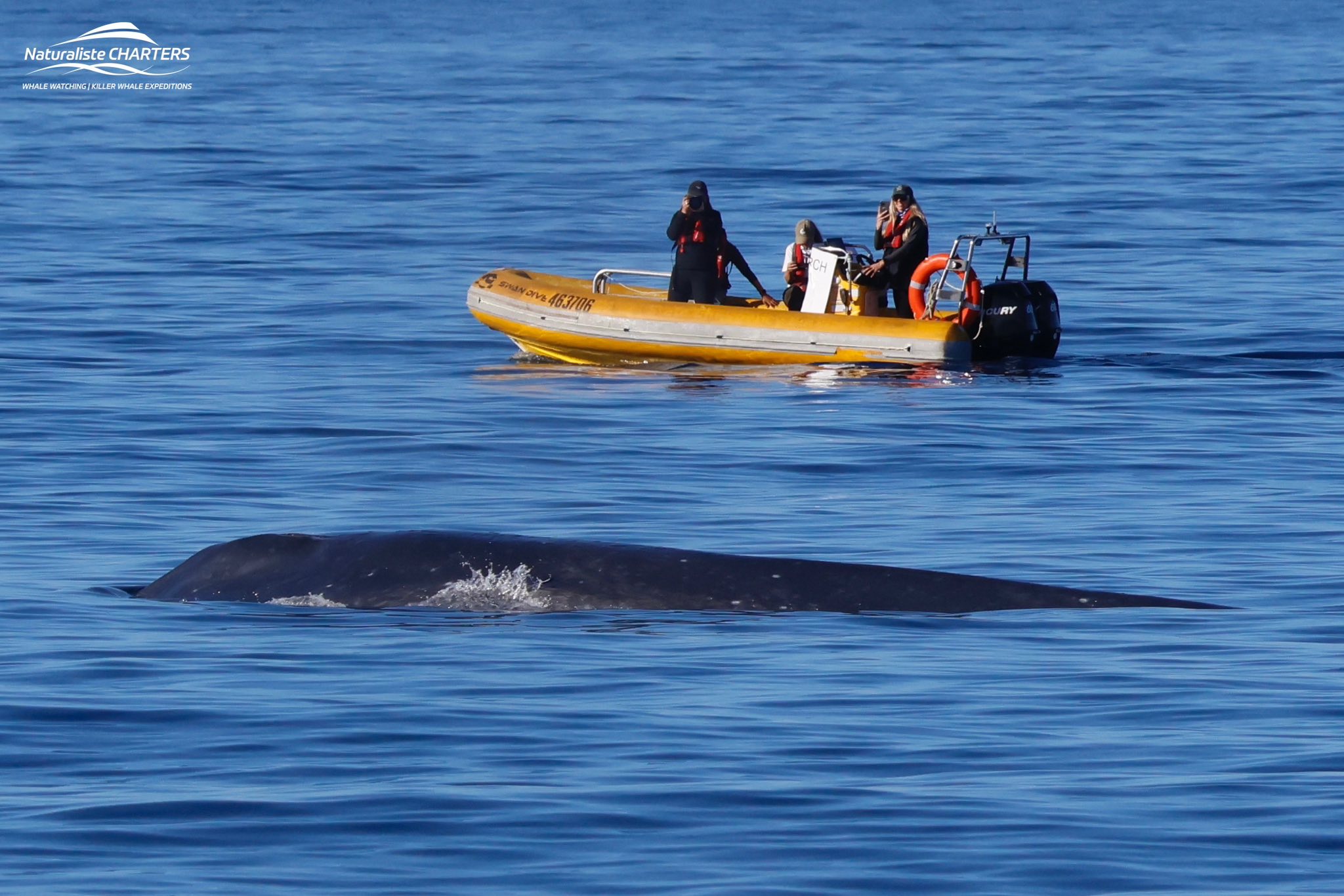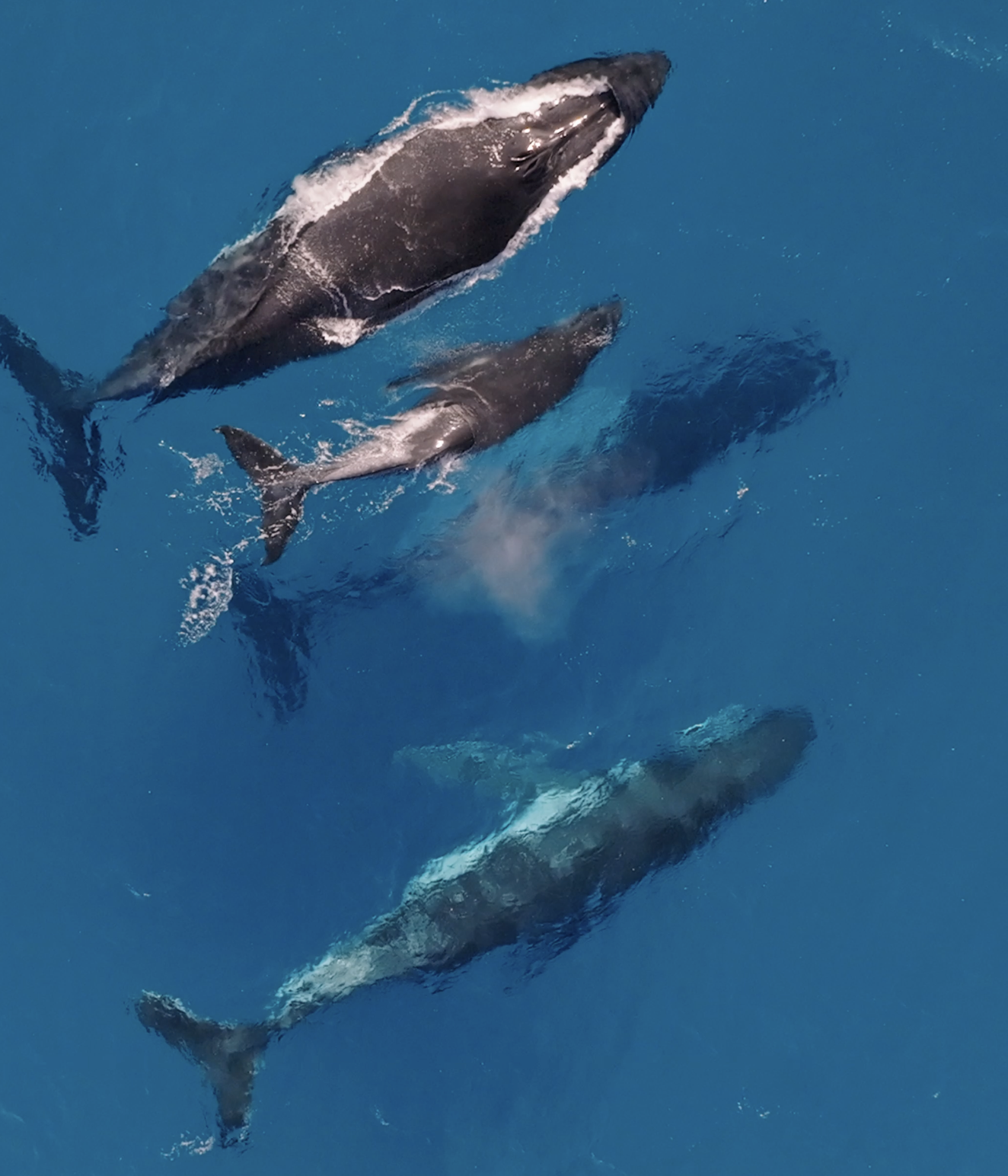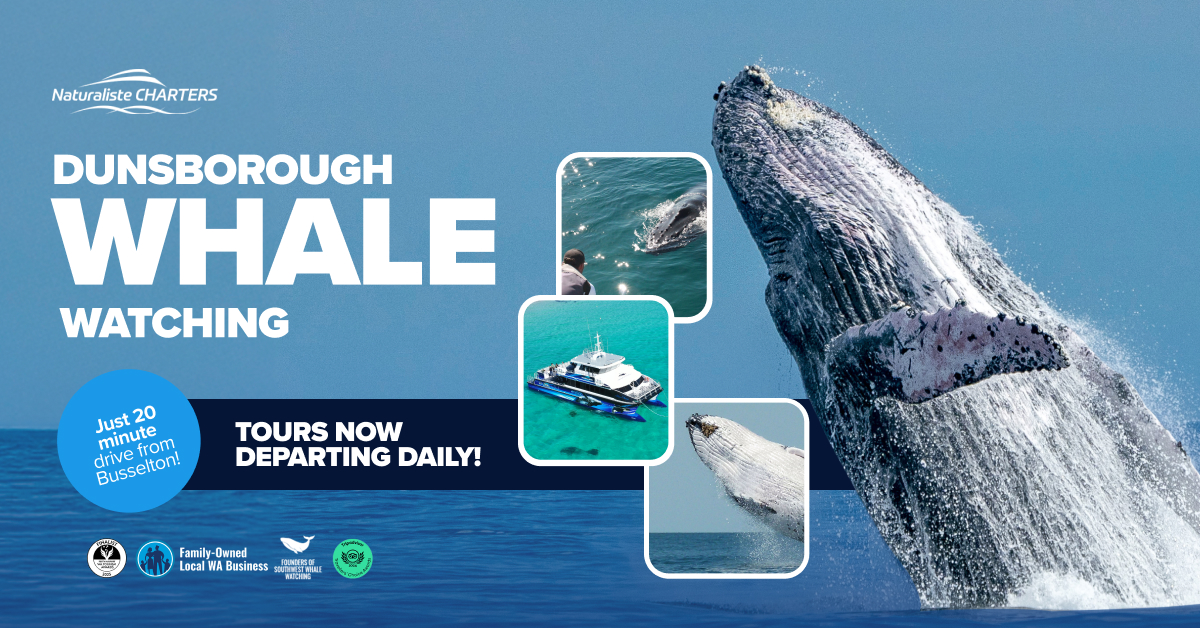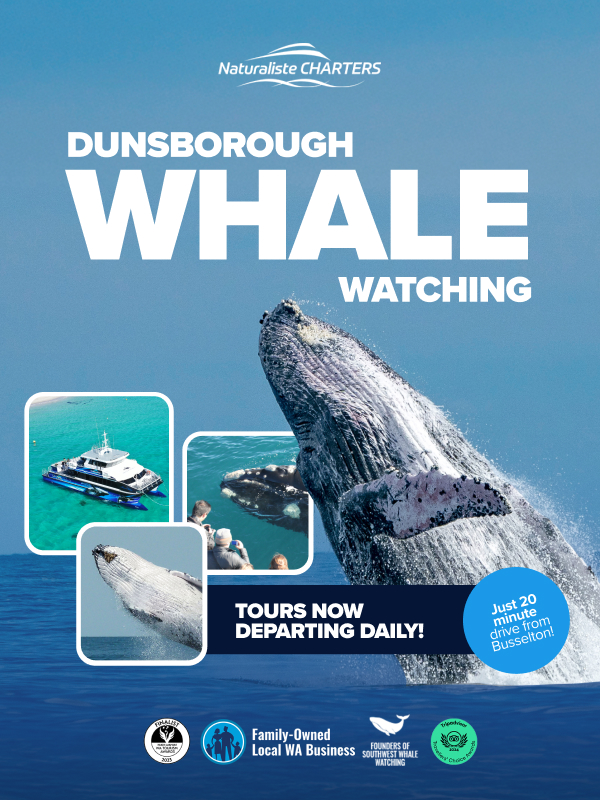SUNDAY 13.09.2020
We always express that every tour will be different. Sunday’s tour was no exception to this. The northerly winds earlier in the week had subsided and the skies opened up letting the sun beam down into the turquoise water below. We had already experienced two amazing days of whale watching humpbacks and a mother- calf pair of southern right whales. To begin Sunday’s morning whale watching we found the SRW mother and calf! They were nestled together in about 15m of water, utilising the calm waters in the bay to nurse. With humpbacks dotted all throughout the bay we could see breaching on the horizon while the inshore whales appeared to be much more docile.
As we relished in the spring sunshine the call came down from our skipper Dundee. The words that can make a Marine Biologists heart skip a beat…. “Blue Whale..” There was one in the area. All eyes scanned the crystal blue water for the worlds largest animal! Although big they are surprisingly VERY elusive. We waited with anticipation for it to surface and surface it did!! With a humungous whoosh it was exhaling in line with our vessel Alison-Maree.
As passengers jaws dropped its long back silky back rose up along the surface. With its little “thumbs-up” dorsal fin finally breaking the surface, the large whale slunk back under water. It surfaced two more times like this. Excitement had erupted on the vessel but little did we know there was in fact another smaller blue alongside the initial whale. This smaller (approximately 10m long) and slightly lighter coloured animal rose just as the first did. They were already on their way around the cape and heading off into much deeper water! These could be a mother-calf pairing of pygmy blue whales, VERY EXCITING! We will not speculate until further analysis of the images is done by SouWEST. The local cetacean experts!
Passengers are told onboard to ALWAYS keep an eye out! Sharp-eyed passengers in the helm spotted what they had already been educated on. They were told what a minke whale may look like, and it wasn’t long until we had a dwarf minke darting around between us and the coast! This slinky minke wasn’t phased by us and surfaced about ten times around the vessel before ducking back underwater and out of sight! That took our cetacean count to 4 for the one tour!! Which is not a regular sighting!
Not to take anything away from the afternoon tour who also had a magical time! No blues or minkes but the humpbacks put on a show and the weather could not have been better! Bottlenose dolphins that were fishing became distracted by our vessel on the way back. They rode in our wake propelling their entire grey, robust bodies out of the water. Most likely for pure joy, it certainly put a smile on our passengers faces!
DID YOU KNOW?
Since we were able to witness 4 out of 10 species of cetacean found in the Indian Ocean in a single tour, we have broken down some information below. We hope this will help better understand them and their differences. We mainly use “Handbook of Whale, Dolphins and Porpoises” by Mark Carwardine for specific information. If you were looking for a great resource this is our go to! We highly recommend it!
Southern Right Whale
Characterised by a large rotund body and an enormous head, which reaches up to a third of their body length. They also lack the throat grooves/pleats that characterise blue whales and humpbacks. This family of whales (Balaenidae) are the only to have callosities – areas of thick, irregular, calcified skin scattered around their head. They have a V-shaped blow that can reach up to 7m high. The southern right whale is the only cetacean species where an anomalously white individual is relatively common. They have five colour variants in the Southern Hemisphere. An all white calf (with black splattering) can be born and this will darken to light grey or even brown as it ages. These whales have the largest testes of any animals, reaching 2m long and weighing a whopping 525kg EACH!
Blue Whale
The largest animal known to have existed on Earth (yes this includes the dinosaurs!). Their common name comes from the distinctive mottled bluish colouring (especially when underwater). Categorised as Rorquals meaning ‘the whale with pleats’. Referring to the throat grooves that run longitudinally from the chin towards the navel. Most are large and slender bodied with females being larger than the males. Their blow can reach up to 12m high! We have two species which are said to visit Geographe Bay. Antarctic or ‘true’ blue whale and also a pygmy blue whale. An oxymoron since pygmy means short stature and this whale is far from being “short”.
The pygmy blue is most commonly seen and although it can reach a maximum length of 24m it is very compact and dense weighing a maximum of 130 ton!! Blue whales will tend to cruise at speeds of 3-6km/hr but can burst to 35km/hr if trying to out run Killer Whales. A blue whale has been recorded to have the loudest sound of any animal – with incredible loud, low frequencies most of which the human ear can’t pick up. It is said that these vocalisations can reach hundreds or even thousands of kilometres. Once thought to be solitary animals, we can see them in pairs or sometimes up to 9 individuals moving together throughout the Dunsborough season!
Humpback Whale
Also in the category Roquals. they have the longest and most complex song of all whales. Its scientific name is Megaptera which translates to big-winged after its 1 ton and 5m long flippers. Probably the most acrobatic of all large whales with surface active behaviour occurring at all times of the year. Breaching, pectoral slapping, and tail lobbing are used in a variety of contexts and range of functions. This includes communication, mate attraction, parasite removal, prey corralling, excitement/annoyance and even play!
We often seen a wide variety of group composition. When females are no longer ovulating (mid migration) adult males and females will begin to head back south to cold sub-antarctic waters.We don’t often see Mother-calf pairs at the start of Dunsborough season (September) but it is not impossible. A trio of mother-calf pair and a male escort is common towards the end of the season. This is because the young calves need to nurse and gain the valuable blubber layer to survive the colder waters that lies ahead.
Dwarf Minke Whale
In the same family as Blue and Humpback whales. Has been referred to historically as ‘stinky minky’ due to its bad smelling breath. This fast small baleen whale has little known about its distribution which makes our sightings even more special! These cryptic whales can be photo-identified from small nicks and notches on their dorsals, body pigmentation and body scarring. These whales were too small to be hunted by whaling pioneers but as larger whale numbers were decimated, they were hunted more intensively. Although the dwarf species is not hunted in this era, its larger cousin the Common Minke Whale is targeted by commercial whaling in Norway, Iceland and Japan.
Thanks for reading and stay tuned for more amazing whale watching encounters and information!!





